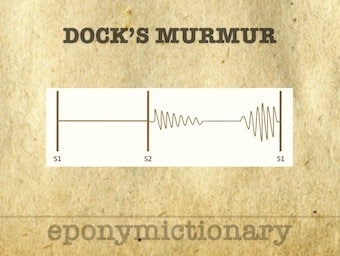
Nancy B. Esterly
Nancy Burton Esterly (1935 - 2017) was an American pediatric dermatologist. Esterly-McKusick syndrome (1971)

Nancy Burton Esterly (1935 - 2017) was an American pediatric dermatologist. Esterly-McKusick syndrome (1971)

Dock’s murmur: Early diastolic murmur when there is a severe stenosis of the left anterior descending coronary artery. 1967 William Dock

Funtabulously Frivolous Friday Five 325 - Just when you thought your brain could unwind the medical trivia FFFF

Gerrie Potgieter gives a fantastic 7 min intro into how to decipher a CT brain imaging.

William Dock (1898-1990) American cardiologist, irascible visionary whose prophetic warnings bucked convention. Dock's murmur, Dock's Law

Large-scale clinical trials are expensive and take years to go. Do they generate patient and economic benefit that justifies the cost of trials?

Pirkko Santavuori (1933 - 2004) was a Finnish paediatric neurologist. Infantile neuronal ceroid lipofuscinosis (INCL) [Santavuori disease]

Bec Nogajski takes you on a 20 minute journey about YOU. How you team, how you follow, and what leadership style would work for you.

September 2020 Adult Abdominal imaging cases and interpretation with Michael Avery; Joshua Davis; Kelsey Lena and Kyle Cunningham, MD

Julia Bell (1879 - 1979) was an English human geneticist. Martin-Bell syndrome (1943) [Fragile X syndrome]

Paracetamol / Acetaminophen Update. Dr Angela Chiew – Australian Clinical Toxicologist and Emergency Staff Specialist

Ingrid Gamstorp (1924 - 2007) was a Swedish paediatric neurologist. Gamstorp disease (1956); Gamstorp-Wohlfart Syndrome (1959)